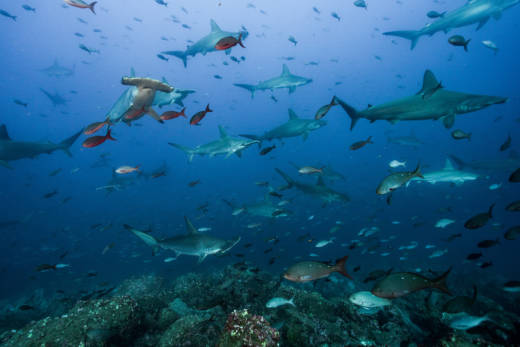For the first time, scientists have videotaped sharks traveling a 500-mile-long “shark highway” in the Pacific, and they plan to turn it into a protected wildlife corridor in the ocean.
Biologists have been attaching electronic tags to sharks near Costa Rica for years. They knew the sharks sometimes traveled south to the Galapagos Islands, but they’d never actually witnessed it. And they needed scientific — and visual — evidence to make their case for protecting the route.
To do that, they took some GoPro-style cameras and attached them to metal frames along with bloody fish bait. They’re called BRUVS, for “baited remote underwater video system.” The researchers dragged these contraptions behind a research vessel for almost two weeks.
And they waited, and waited, spending hours watching live video of nothing but blue water — until dozens of sharks suddenly swam out of the gloom and into view. “Amazing,” biologist Mario Espinoza says of the moment. “We actually documented over 16 species of sharks and fish, also sea turtles and dolphins. … It’s really surprising to see that many animals.”
Sharks dominated — mostly hammerheads but also thresher sharks and silky sharks. Sometimes a single video frame captured dozens of them. What the scientists were witnessing is a continuous “swimway” of large marine animals. It starts in Cocos Island in Costa Rica and extends to the Galapagos.

9(MDAxOTAwOTE4MDEyMTkxMDAzNjczZDljZA004))
